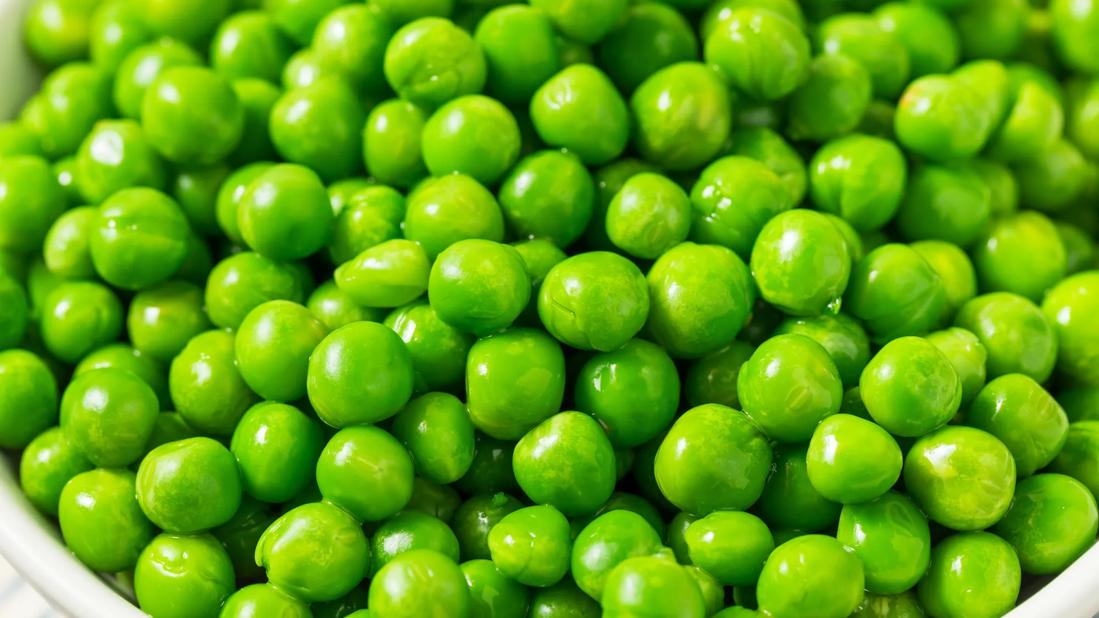Green peas are high in fiber and protein, which support your digestive system, heart and eyesight

If you were forced to eat your peas as a child and haven’t touched one of the tiny, green spheres since, it may be time to give peas another chance.
Advertisement
Cleveland Clinic is a non-profit academic medical center. Advertising on our site helps support our mission. We do not endorse non-Cleveland Clinic products or services. Policy
“Green peas are an excellent source of protein, fiber and nutrients,” says registered dietitian Michela Palma, RD, LD. Plus, we promise they’re tastier than you remember.
You might be surprised to learn that peas aren’t vegetables. They’re legumes (plants that produce pods with seeds inside). This puts peas in the same family as chickpeas, lentils, beans and peanuts. Still, most people (including farmers and food manufacturers) count them as vegetables.
There are lots of pea varieties: green peas, yellow peas, black-eyed peas, snap peas and snow peas, to name just a few. Palma touts the many benefits of adding green peas to your meals.
The nutritional value of peas depends on how you prepare them. For instance, cooking peas with butter or bacon adds fat. Steaming preserves more nutrients than boiling. You can even eat green peas raw.
One cup of unsalted, boiled peas has 134 calories and these healthy nutrients:
Antioxidants and nutrients in peas help keep you healthy in many ways.
With 8 grams of protein per cup, peas are a great source of plant protein. That’s good news for people who follow vegetarian or vegan meal plans, as well as anyone looking to get more protein. Another bonus: The protein in peas is easier to digest than meat-based protein sources.
Advertisement
Protein is an important macronutrient that your body needs to:
If you still don’t love the taste of peas, you can get the same protein benefits from pea protein powders. One scoop of pea protein isolate (the powder you buy online or at a store) has 15 to 20 grams of protein for every 100 calories.
A cup of cooked peas has almost 9 grams of fiber. Most of that fiber is insoluble, which adds bulk to your stool, making it easier to pass.
“Getting enough fiber every day helps prevent painful constipation,” says Palma. Fiber from plant sources can also naturally improve your gut health.
Because it takes your body longer to break down protein and fiber, eating peas regularly can help you achieve or maintain a healthy weight.
“High-protein, high-fiber meals make you feel full for longer,” notes Palma. “When you’re satisfied after a meal, you’re less likely to reach for sweets or snacks later.”
Those tiny peas are packed with plant-based phytonutrients and polyphenols. These nutrients provide an abundance of antioxidant benefits.
“Antioxidants are your body’s defense against free radicals that can damage cells and tissues,” says Palma.
Inflammation caused by free radicals can increase your risk for cardiovascular (heart) disease, cancer and other chronic health conditions.
Peas are also high in lutein and zeaxanthin. These carotenoids give peas their vibrant green color. Studies show that lutein and zeaxanthin protect against harmful blue light that can damage your eyesight.
Peas contain these heart-healthy minerals:
With 11 grams of carbohydrates per cup, peas have a low glycemic index. This means eating peas won’t cause a sharp jump in blood sugar (glucose) levels, which is important if you have diabetes.
Peas also keep blood sugar levels steady because it takes longer for your digestive system to break down their fiber and protein.
Generally, peas are good for you and safe to eat. But there are some risks:
Advertisement
Peas are a highly versatile legume that you can boil, roast, sauté or air fry. You can buy them fresh, canned, dried or frozen.
“Peas are an affordable, easy way to get more nutrients, protein and fiber in your meals,” encourages Palma.
Advertisement
Learn more about our editorial process.
Advertisement

Edamame, lentils and chicken breast are good sources of protein

Too much sodium can cause high blood pressure and increase your risk of heart disease

Eating too much salt can put extra pressure on your blood vessels and heart

High in antioxidants and vitamin C, kohlrabi lowers disease risk, protects your heart and aids digestion

The gluten-free, fiber-rich superfood supports gut and heart health and can help with diabetes management

Wasabi root may protect against cancer, food poisoning and memory loss

Limes and lime juice are rich in vitamins, minerals, antioxidants and other nutrients

This herbal drink may ease allergies and boost prostate health

The best parenting style balances enforcing rules and showing plenty of love

Tips include cutting back on sugar, focusing on exercise and managing stress

It can be harder to let go when you’ve invested time, energy and emotions — but it might be the healthier choice long term